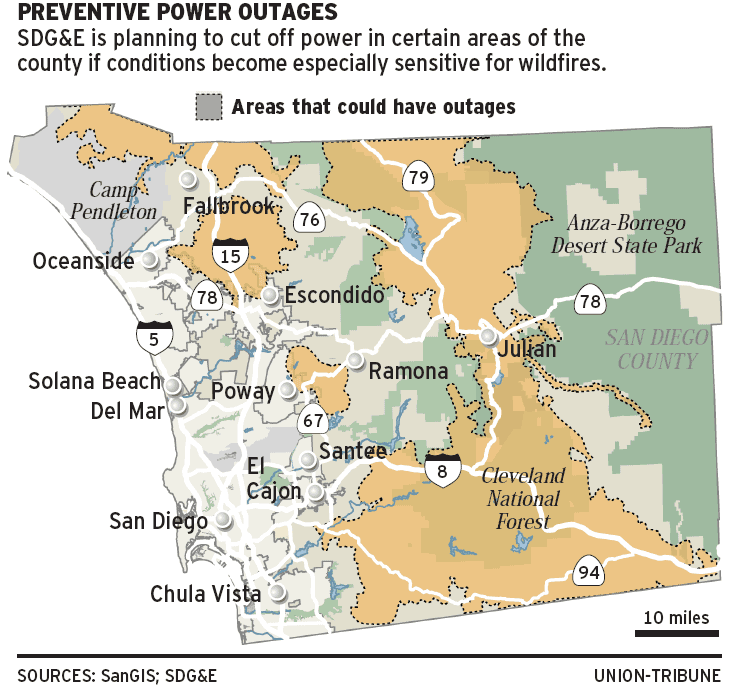Calif. Legislative Analyst’s Office proposes cuts for CalFire
The California Legislative Analyst’s Office says that the CalFire expenditures have more than tripled in ten years, rising from $307 million to $967. Considering the budget crisis that the state is facing, the office proposes some reductions in the CalFire budget:
- Eliminate funding for the DC-10 air tanker conctract. $6.8 million savings.
- Delay vehicle replacements. $17 million savings.
- Close low-priority fire stations and other facilities. $10 million savings.
- Cancel replacement of the Hemet-Ryan Air Attack Base. $23 million savings.
“Superfog” being studied in Florida
The deadly combination of smoke and fog that has caused massive pileups in Florida, including the one covered by Wildfire Today last year that killed five people and involved 70 vehicles, has a name: “superfog”.
It usually forms at night when high humidity combines with dense smoke and condenses into a ground-level cloud, reducing visibiilty. Meteorologists in Florida are studying this unusual weather anomaly because of its threat to motorists, given the state’s frequent prescribed fires and high humidity.
From the Orlando Sentinel:
Gary L. Achtemeier, the meteorologist who coined the word superfog in 2002, has developed a computer program that predicts superfog, and efforts are under way to link his program with those used by the National Weather Service.
“We are very intrigued by Achtemeier’s program because it’s a breaking and exciting new area,” said Bart Hagemeyer, a meteorologist with NWS in Melbourne. “There is a lot of movement in that area right now. We are learning more about it to see how we can use it locally.”
But superfog has not entranced all meteorologists.
State Division of Forestry meteorologist Deborah Hanley said fire officials do not like to use the word superfog to describe the weather phenomenon.
“There’s no question that smoke combining with fog can increase the density of fog, but the term implies smoke. Dense fog can happen on its own,” Hanley said. “We tend to prefer the term ‘whiteout.'”
Hanley thinks superfog will remain an academic term and not make its way into weather forecasts.
The superfog that shrouded I-4 on Jan. 9, 2008, began as smoke from a smoldering prescribed burn near I-4 and County Road 557.
That smoke combined with developing dense fog between C.R. 557 and State Road 559 to form superfog. Calm winds pushed the superfog onto I-4. Two hills on either side of the interstate trapped the superfog over the roadway — blinding motorists.
Hazardous-weather outlooks said patchy dense fog was expected overnight Jan. 8 and early Jan. 9, especially along the I-4 corridor. But the reports didn’t mention smoke — a key ingredient of superfog.
Closing statements today in sentencing for Esperanza fire
Both the defense and the prosecution rested on Monday and closing statements are scheduled for Tuesday. Raymond Oyler was convicted of five counts of first degree murder for the deaths of five firefighters on Engine 57 from the San Bernardino National Forest when they were overrun by the 2006 Esperanza fire set by Oyler.
DuPont introduces advanced form of Nomex
A new version of a fire-resistant Nomex fiber introduced on March 17 by DuPont reportedly gives firefighters up to 20 percent more thermal performance during emergency conditions. The company calls it “smart-fiber technology” and refers to the ability of the new material–initially for use in thermal liners in turnout gear–to detect emergency conditions and automatically expand to trap more air for greater thermal insulation. This expansion occurs when temperatures reach 250 degrees Fahrenheit, but in routine conditions the material remain thin and felxible.
The new material is currently available in the U.S. and Canada and will be introduced globally in late 2009.


 The fire in the Ocala National Forest in Florida has burned 10,000 acres north of the Juniper Springs recreation area. Smoke jumpers assigned to the fire have traded their ‘chutes for canoes which they are using to access remote areas.
The fire in the Ocala National Forest in Florida has burned 10,000 acres north of the Juniper Springs recreation area. Smoke jumpers assigned to the fire have traded their ‘chutes for canoes which they are using to access remote areas.
